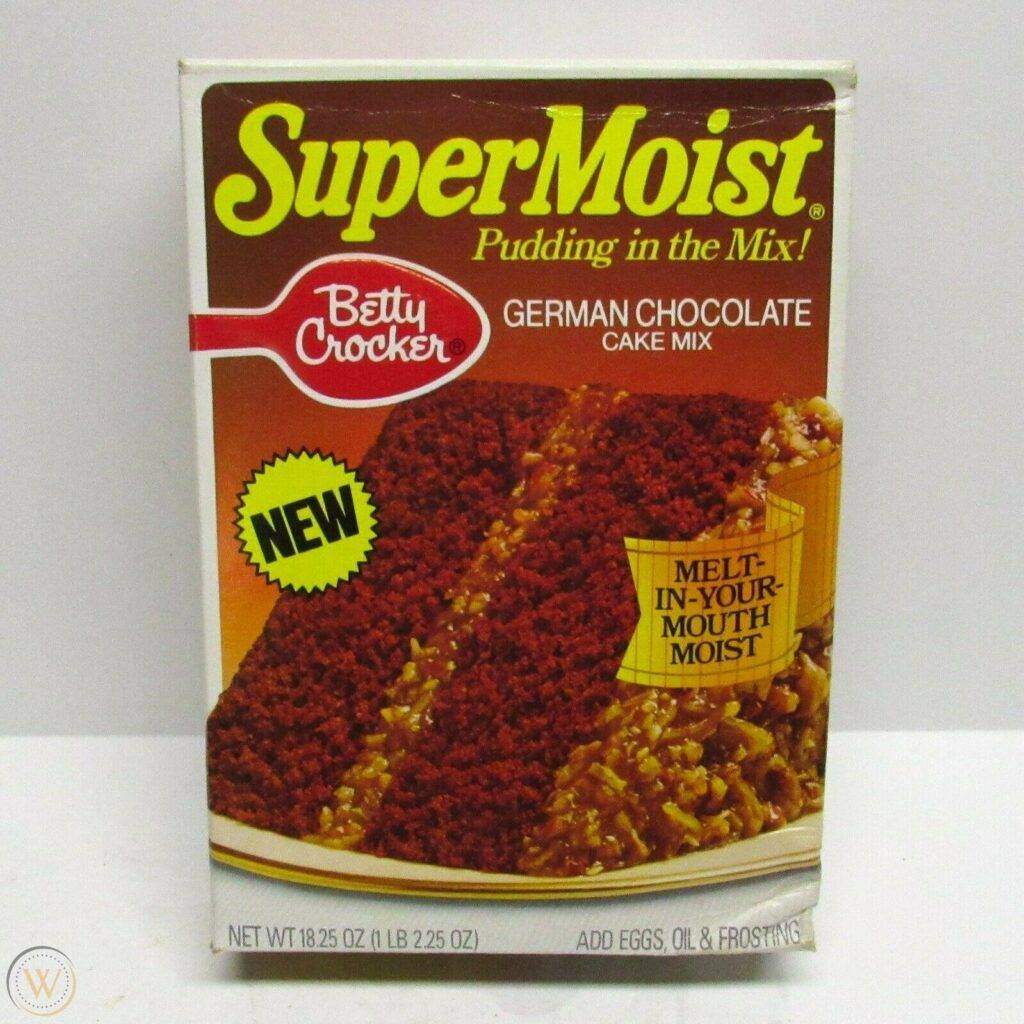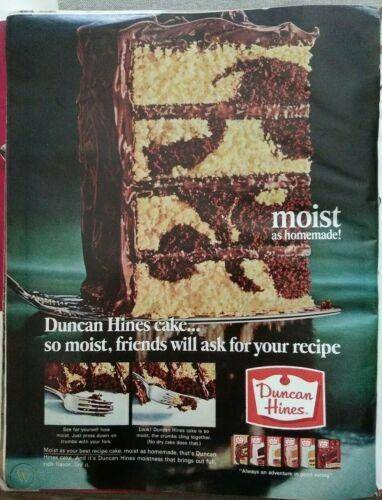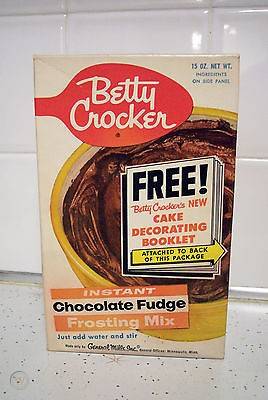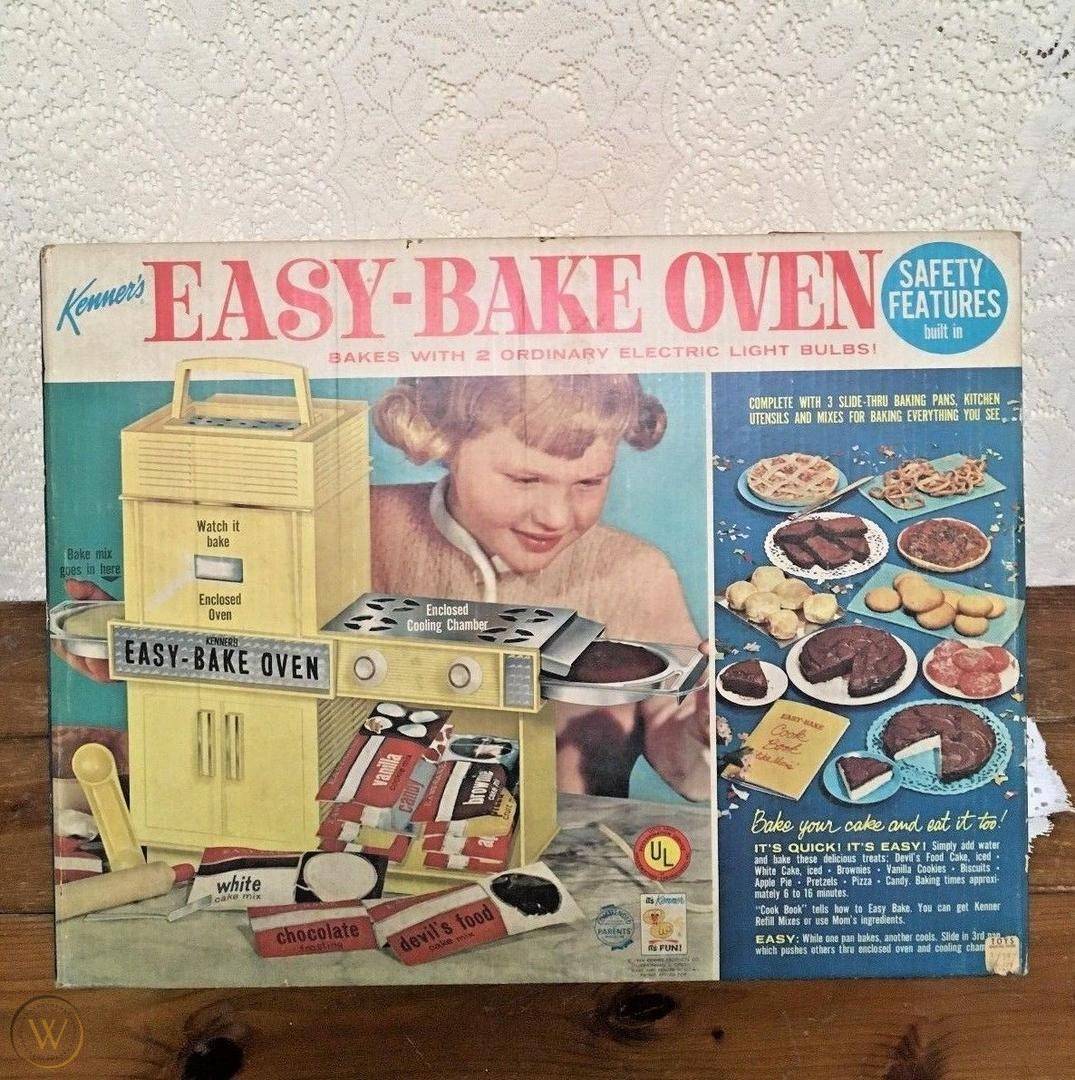
It may sound strange, but I get sentimental whenever I bake a cake using a boxed cake mix like Betty Crocker or Duncan Hines. If it’s a chocolate cake with chocolate frosting (and it usually is), I get downright weepy. This happened recently while I was baking a cake for my granddaughter’s first birthday. I attributed my sentimentality to the fact that our sweet little baby was growing up. Still, I also realized it has a lot to do with my own childhood memories.
When I was a kid, my mom served us dessert pretty much every night after dinner. Since we lived in the suburbs in the early 1960s, the dessert usually came out of a box. Sometimes it was Jello or chocolate pudding, but she made a chocolate cake from a boxed cake mix on special occasions. As far as I was concerned, it was the best dessert she could make for us. Maybe it was because she let us lick the mixing bowl, wooden spoon, and/or electric mixer beaters (this was before anyone worried about the danger of consuming raw eggs), or perhaps it was the way she decorated it with frosting and made it look so special. Whatever the reason, it was—and still is—my favorite dessert.
The Evolution of Boxed Cake Mix
The first boxed cake mix was patented in the early 1930s by P. Duff and Sons, a molasses company in Pittsburgh. It seems the company had a surplus of molasses, so owner John D. Duff figured out a way to dehydrate it. He then added it to a mix of flour and other ingredients, and voila, the first boxed cake was born.
To make the “homemade” cake—initially gingerbread—home cooks only needed to add water to the mix and bake. However, other flavors were eventually added, including devil’s food and spice cake. Then, in 1933, the formula was changed a bit. In addition to water, eggs had to be added to the cake mix. This change proved to be popular with consumers who seemed to like the idea of adding at least one fresh ingredient to the powdered mix.

It wasn’t until after World War II that boxed cake mixes really became popular and other companies jumped on the bandwagon. Several large companies such as Betty Crocker (General Mills), Pillsbury, and Duncan Hines produced flour during the war. When the war ended, they needed other ways to sell their product. So they, too, developed cake mixes. Betty Crocker and Duncan Hines mixes required home cooks to add water and eggs. In contrast, Pillsbury mixes required only water (they eventually went the “eggs needed” route).
The Icing on the Cake
Post-war sales for boxed cake mixes were strong, but then in the 1950s, their popularity began to wane. So company executives tried to figure out why women (pretty much the primary home cooks in the 1950s) no longer seemed so enamored of their products. Eventually, through research and focus groups, it was determined that women felt guilty that they weren’t putting enough effort into making a cake when using a boxed cake mix. The solution: frosting!

With frosting or icing, a woman could feel as if she had more creative control over how her cake would look and, perhaps more importantly, how it would taste. To help cooks create perfect cakes, instructions were on cake boxes, recipe books, and magazines. I remember my mother proudly making swirly designs in the frosting on her cakes using the back of a spoon. I guess this was her way of customizing this dessert for her family!
Easy Does It
Another reason boxed cake mixes trigger sweet childhood memories is that they make me think about one of my favorite toys: the Easy-Bake Oven! I was the proud owner of one of the original bright teal models first made by Kenner in November 1963. Those first models also came in yellow. They came with a tiny mixing bowl, spoons, and metal baking trays. This toy oven was powered by two 100-watt lightbulbs.

My Easy-Bake Oven helped me produce mini chocolate cakes and other desserts that I proudly served to my family. All I had to do was mix up the batter, pour it into the pan and then slide it into the “oven.” After the light bulbs did their magic, I would slide the pan to the cooling side. Of course, there were various cake and dessert mixes you could buy separately. I also remember my mom sometimes giving me a little bit of the cake mix and frosting she was using to make my own cakes.
My brother still teases me about how he had to sample my toy desserts. There was also some kind of cherry pie or small candies that (even I would agree) were pretty awful. But I think my chocolate cake came out almost as good as my mom’s!
Lisa Mancuso has an associate’s degree from the Fashion Institute of Technology and a bachelor’s degree from Stony Brook University. She has worked as the Associate Director for Creative Marketing at McCall’s Magazine. As a staff writer at the National Association of Professional Women, Lisa wrote feature articles for the bi-monthly online newsletter. She has served as a reporter for the Northshore News Group and ICD Publications.
WorthPoint—Discover. Value. Preserve.
The post Feeling the Love: Boxed Cake Mixes first appeared on WorthPoint.